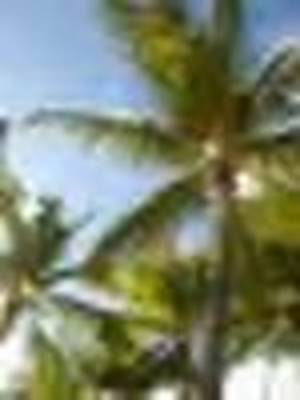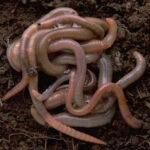Don’t feel bad if you’ve never heard of coconut coir! I never had either until I was doing some research on raising nightcrawlers. Apparently, besides being excellent bedding for worms, it is also an organic, environmentally-friendly replacement for peat moss, compost, vermiculite and other growth media and mulches used in home gardening and hydroponics.
So what is coconut coir? When you buy a coconut in the store, it has had its hard outer covering removed to reveal the hard shell (the coconut seed) we recognize. In between these two coats is a fibrous material that is the coir. You’ve probably seen coconut coir without realizing what it was! Bristly door mats, stiff brushes, upholstery padding, fishing nets, twine and rope are commonly made from coconut fiber.
Coconut fiber has been used since ancient times. Indigenous to Southeast Asia, coconut trees were spread throughout the tropics by human travel and trade, and have been cultivated for at least 4,000 years. It is one of the most useful trees, providing food, drink, building materials, fuel and fiber. Coir fiber was used to lash together pieces to construct boats, buildings, weapons, and tools until the late eighteenth century, when iron nails were introduced to the region.
Although coconut trees grow in most tropical regions, the majority of commercially produced coir comes from Sri Lanka and India. This natural fiber is strong, has a hairy texture, and is resistant to salt water and the effects of weather. Brown coir is produced from fully ripened coconuts, and white core is produced from coconuts that are immature. White coir is softer and has less strength than the brown coir.
During the curing process the husks are kept in an environment that allows them to partially decompose and be separated into fibers and a residue called coir pith. This coir pith, or dust, accounts for about two-thirds of the product and was generally considered waste, until a process was developed in the 1980’s that transformed it into a soil treatment, mulch, and hydroponic growth medium. The pith is compressed into bricks, discs, or bales that can be torn into chunks and rehydrated before use as a planting medium.
As a planting medium or mulch, coconut coir has many advantages over other traditional products. It is uniform, odorless, easy to handle, and does not crack, shrink, or produce a crust. The top layer always remains dry, which inhibits the growth of fungus. It has an ideal pH for growing plants and contains significant amounts of phosphorus and potassium, which are essential plant nutrients.
Free of seeds, and without fungal and bacterial spores, coir inhibits the growth of soil pathogens. Lightweight and porous, coir has excellent drainage and air porosity which allows plants to grow better root systems in a shorter length of time. Used as a mulch, coconut coir reduces the need for frequent watering, since it retains up to eight times its weight in water and releases it slowly, and will biodegrade over a period of three to four years.
Coir is not widely available in gardening centers but can be ordered online from manufacturers and distributors. It is available in compressed disks, bricks, or bales. When rehydrated for use, coir will expand to many times its original size. A disk that is 5″ in diameter and 1-1/2″ thick, when rehydrated, will fill a gallon container.
Unlike peat moss, coconut coir is a 100% renewable resource. Coconut trees flower monthly, but it takes a year for a coconut to mature, so a tree always contains coconuts in various stages of development. Each tree will yield between 50 and 100 coconuts per year.
One drawback to the coir manufacturing process is the waste water that results. Organic pollutants, including tannin, fat, polyphenols, pectin, and bacteria including salmonella are released during the manufacturing process, but researchers are looking into ways to treat this waste water, and at least one manufacturer claims to be treating the waste water they produce.
New uses for coconut coir are being developed. Its durability, ability to hold water and the hairy texture which helps it cling to seeds and soil is making coir an increasingly popular choice for geotextiles, blankets which are laid on bare soil to prevent erosion and allow ground cover to take hold.
Coir biodegrades slowly and there are mountains of coir pith, which until the 1980’s was considered a waste product, waiting to be processed. As the demand for coir as a planting medium grows, these mountains will eventually be reduced. The use of coir in home gardens and hydroponics is increasing rapidly as consumers become more aware of its many advantages over other growth media and its environmental friendliness.



